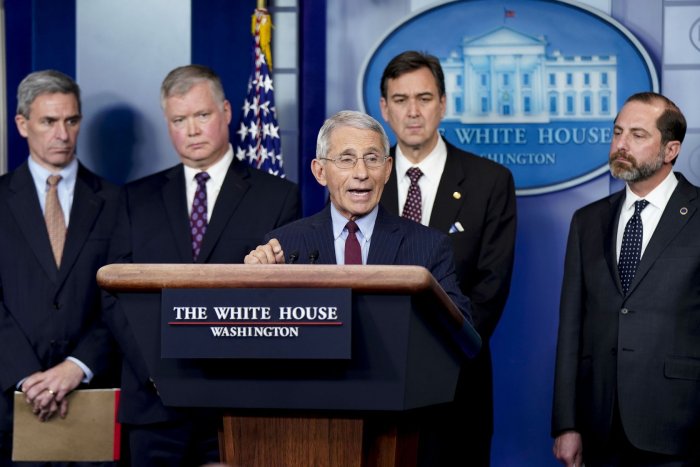1 of 3 | Pedestrians wear face masks to protect from and to prevent the spread of COVID-19 as they walk in Times Square in New York City, on January 10, 2021. File Photo by John Angelillo/UPI |
License Photo
April 16 (UPI) -- Wearing a disposable medical procedure mask under a cloth face covering significantly reduces the flow of respiratory droplets from the nose and mouth, which could limit the spread of COVID-19, a study published Friday by JAMA Internal Medicine found.
So-called "double masking" -- or wearing two coverings over the nose and mouth -- improves fitted filtration efficiency, a measure of a barrier's ability to block particles, by up to 81%, the data showed.
The analysis focused on the simultaneous use of commercially available cloth face coverings, which are typically not medical grade, with disposable procedure masks used in healthcare settings, the researchers said.
The combination is generally effective at sealing off the area from the bridge of the nose to below the mouth, restricting the release of the respiratory droplets that spread the coronavirus, they said.
"We found that enhancements that improve the seal between the mask and facial skin, including full-coverage masks such as gaiters or bandanas over procedure masks, were most effective at improving the performance of masks," study co-author Emily Sickbert-Bennett, told UPI in an email
"[This] leads us to understand that double masking is most effective because of the improved fit that it offers," said Sickbert-Bennett, an associate professor of infectious diseases at the University of North Carolina-Chapel Hill.
The U.S. Centers for Disease Control and Prevention began recommending double-masking in early February, when cases of COVID-19 were increasing in many parts of the country.
Wearing of two coverings over the nose and mouth offers as much as 95% protection against the spread of the virus and could help contain the pandemic "until vaccine-induced population immunity is achieved," the agency said at the time.
For this study, Sickbert-Bennett and her colleagues measured the fitted filtration efficiency of single and double masks worn by three volunteers -- one woman and two men.
The goal was to test the masks' filtration efficiency on subjects of different sizes, and they did so based on six different scenarios, the researchers said.
A disposable medical procedure mask under a polyester gaiter offered the best protection against respiratory droplet release, effectively filtering out 81%, the data showed.
A procedure mask worn under a cotton bandana filtered out 77% of droplets released, while the procedure mask in combination with a cotton mask reduced droplet spread by 66%, the researchers said.
When used alone, the three non-medical-grade masks -- the polyester gaiter, the bandana and the cotton mask -- had fitted filtration efficiencies of just over 40%, meaning they provided the least protection, according to the researchers.
Disposable medical procedure masks worn alone reduced the flow of virus droplets by up to 60%, the data showed.
In addition, when the medical procedure masks were worn over cotton or polyester coverings, fitted filtration efficiencies ranged from 55% to 60%, they said.
This suggests that double masking with a cotton or polyester covering over a medical procedure masks offers the best protection against the release of respiratory droplets, the researchers said.
"The best form of double masking is when you and the person you are interacting with both have a mask," Sickbert-Bennett said.
January 31, 2020
National Institutes of Health official Dr. Anthony Fauci (C) speaks about the coronavirus during a press briefing at the White House in Washington, D.C. Health and Human Services Secretary Alexander Azar (L) announced that the United States is declaring the virus a public health emergency and issued a federal quarantine order of 14 days for 195 Americans. Photo by Leigh Vogel/UPI |
License Photo
















